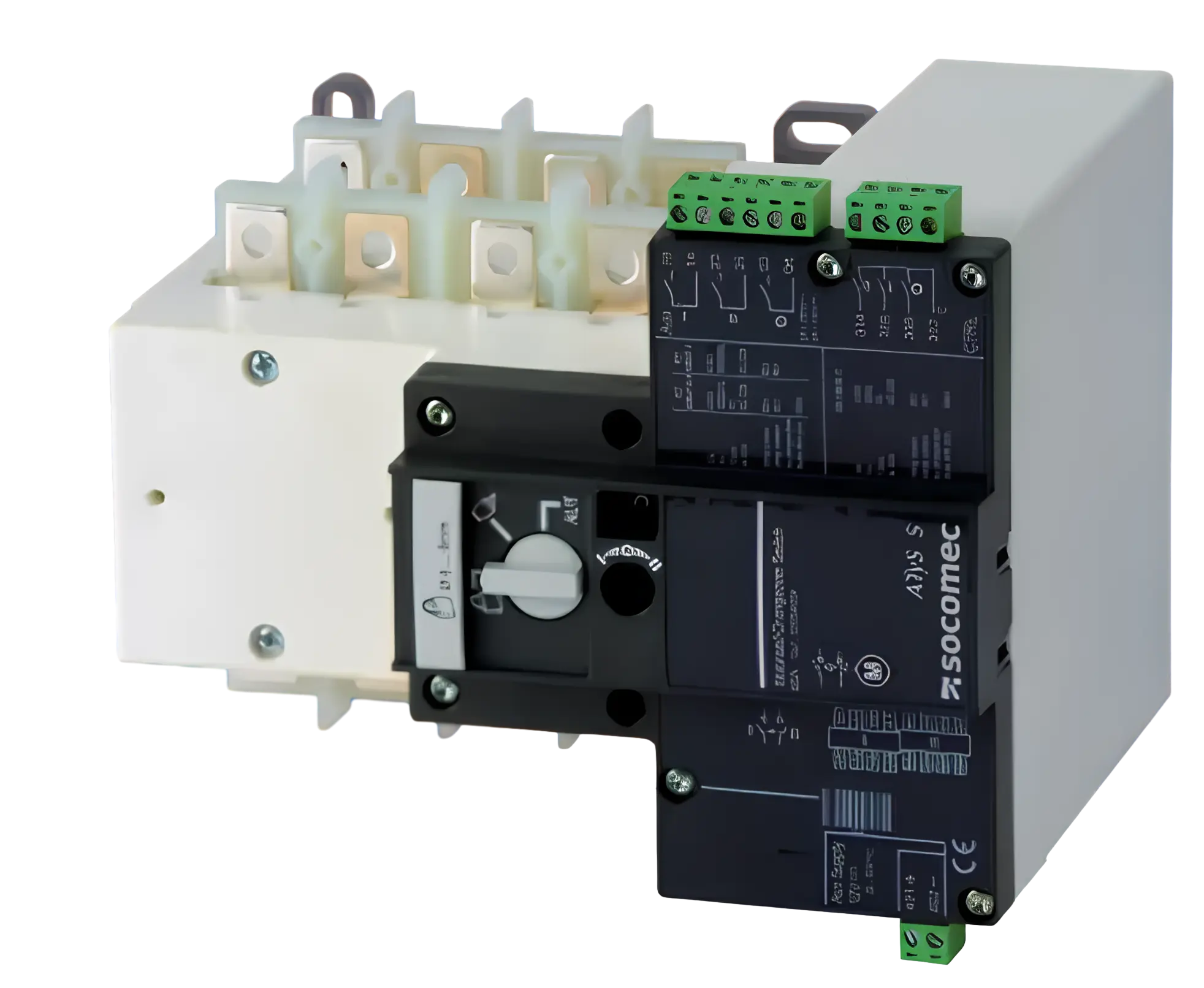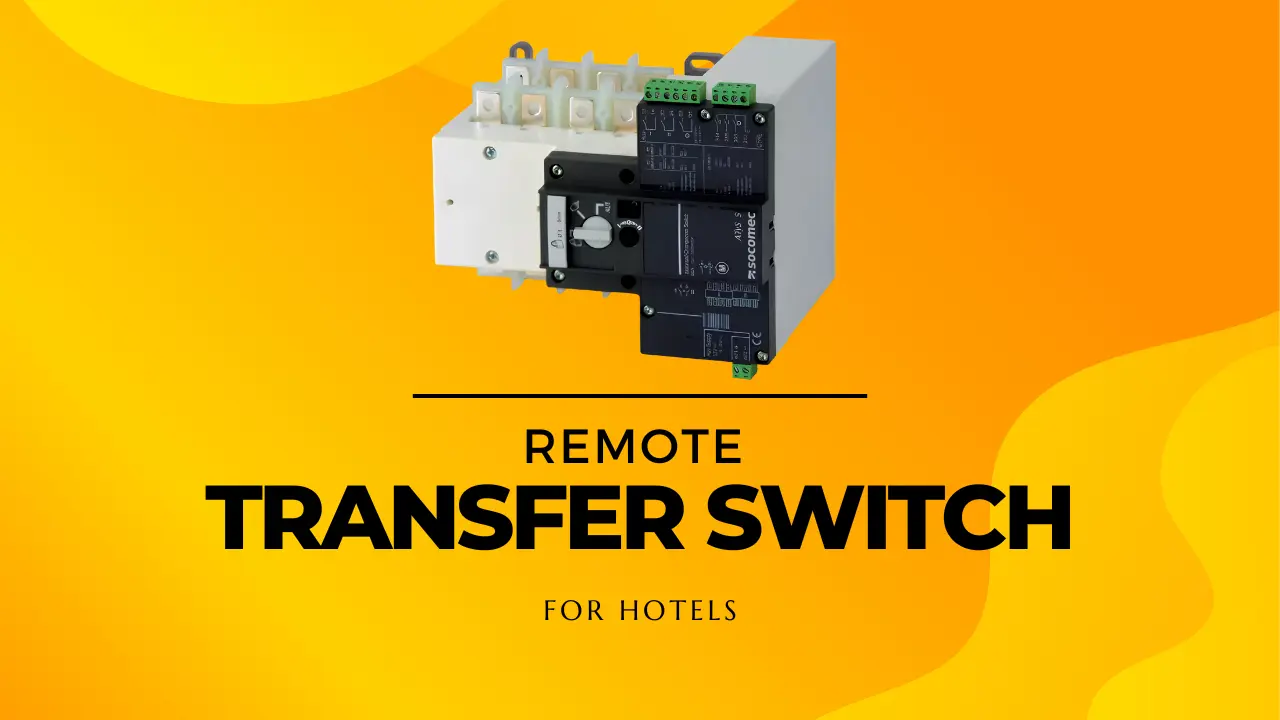When guests check into a hotel, they expect a certain level of comfort and convenience. Power outages that plunge rooms into darkness, disable elevators and cut off hot water are unacceptable in today’s hospitality industry. Fortunately, technology exists to keep hotel operations running smoothly even when the grid goes down. Enter the remote transfer switch.
What is a Remote Transfer Switch?
A remote transfer switch (RTS) enables buildings with onsite generators to safely and efficiently transition from utility power to backup generator power. It’s essentially an automatic switch that “transfers” the load from one source to another when it senses a power disruption.

· Automatic transfer switch (ATS): Senses loss of normal power and starts the generator. Then transfers loads once generator reaches proper voltage and frequency.
· Generator controller: Monitors generator status and health. Starts up, shuts down and governs speed according to load demand.
· Remote annunciator panel: Displays system status indicators and allows manual control of the ATS and generator. Often located in easily accessed spot for operators.
A core benefit of RTS solutions is their ability to manage transitions remotely via digital networks and automation. This removes reliance on manual switching procedures that increase possibility for human error. The system operates automatically based on user-defined settings for critical/non-critical loads.
RTS Systems Support Hotel Resilience
Power anomalies occur more often than many realize. According to Eaton, the average hotel experiences roughly 20 outages per year, equating to 500+ hours without electricity over 25 years. Outages frequently correspond with dramatic weather events like thunderstorms, ice storms or wildfires, which also drive urgent hotel demand.
RTS technology keeps hotels running in adverse conditions by:
· Switching to generator power instantly when sensors detect electricity loss
· Monitoring generator status and activating it when needed
· Alternating between normal and backup power without interruption
· Allowing remote monitoring, control and diagnostics to minimize on-site visits
· Providing power conditioning/filtering for optimal equipment function
· Enabling periodic testing per NEC code requirements when generator is not actively powering loads
Tailored Load Management
An industrial-grade RTS tailors power distribution according to which hotel systems are most essential. Critical loads stay energized regardless, while non-critical loads may be alternately shed/restored depending on length of outage and fuel supply.
Examples of critical hotel systems requiring constant power:
· Life/safety systems – Emergency lighting, fire alarms, communications/security systems
· Critical infrastructure – Data centers, phone systems, key network operations
· Guest necessities – Select guest floors, common areas, refrigeration, pumps
Examples of non-critical hotel systems which could potentially be load-shed:
· Guest room heating/AC (would maintain ventilation and limit temperature fluctuation)
· Kitchen equipment like ovens, dishwashers etc.
· Laundry facilities
· Exterior signage and lighting
With strategic load control, available generator capacity stretches further. The system “load profiles” which equipment gets backup power, for how long and in what priority order.
RTS Solutions Enhance Compliance
Regulatory agencies like the Joint Commission, NFPA and EPA govern various aspects of backup power in hotels. For instance, monthly generator testing ensures readiness when emergency strikes. Generator logs document maintenance and runtimes for permitting authorities. Remote monitoring and control capabilities embedded in RTS systems simplify compliance processes that otherwise require significant man-hours.
Cybersecurity is also built into quality RTS products, providing hotel owners peace of mind. Encrypted networks safeguard against vulnerabilities like hackers disabling generators during outages. Multi-factor authentication prevents unauthorized access or setting changes.
Factors in Choosing RTS Solutions

Reliability – Seek proven hardware/software with a track record of performance. Get references to confirm capabilities. Request product rep demos.
Load capacity – Right-size the system to handle both critical and non-critical hotel loads as required. Factor in possible expansion too.
Ease of use – Intuitive interfaces and detailed monitoring reduce operator workload/errors. Useful for faster response times.
Cyber protection – Encrypted protocols, access controls and physical locks prevent intrusions. Third-party validation testing adds credibility.
Compliance aid – Data logs, remote analytics and automated system testing simplify mandated reports.
Warranties & support – Extended coverage adds value. So does access to experts guiding complex RTS configuration and upkeep.
While seldom noticed day-to-day, RTS solutions act as hotel infrastructure insurance policies against crippling outages. Capabilities like remote generator control and conditional load shedding optimize uptime, guest service continuity and return on investment – especially amidst disasters. By keeping the lights and AC on when it counts most, remotely operated ATS systems provide sorely needed resilience.
